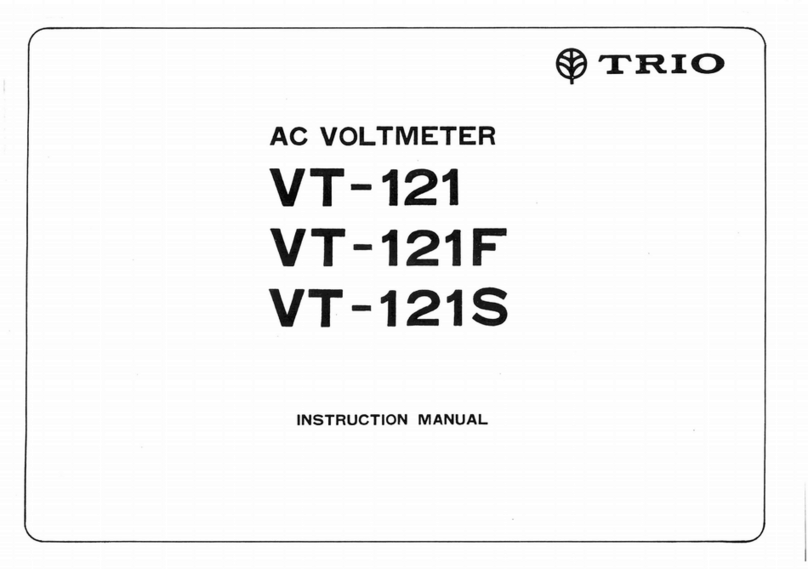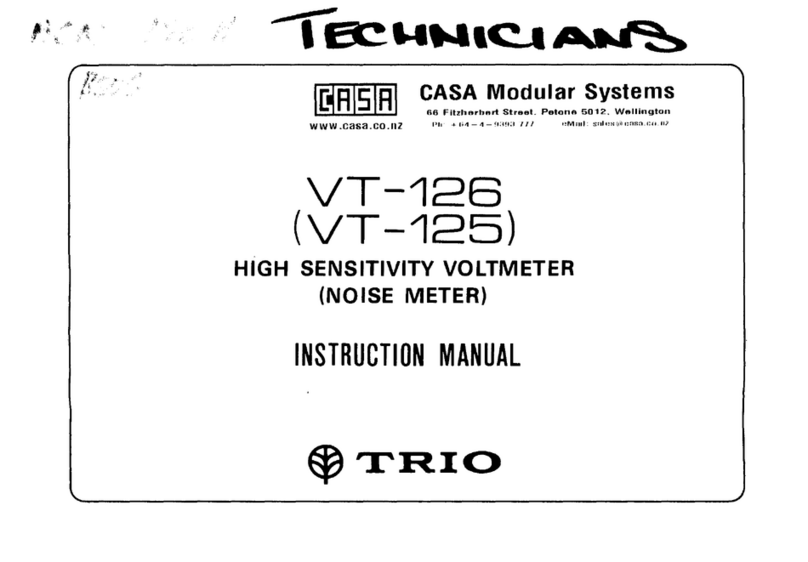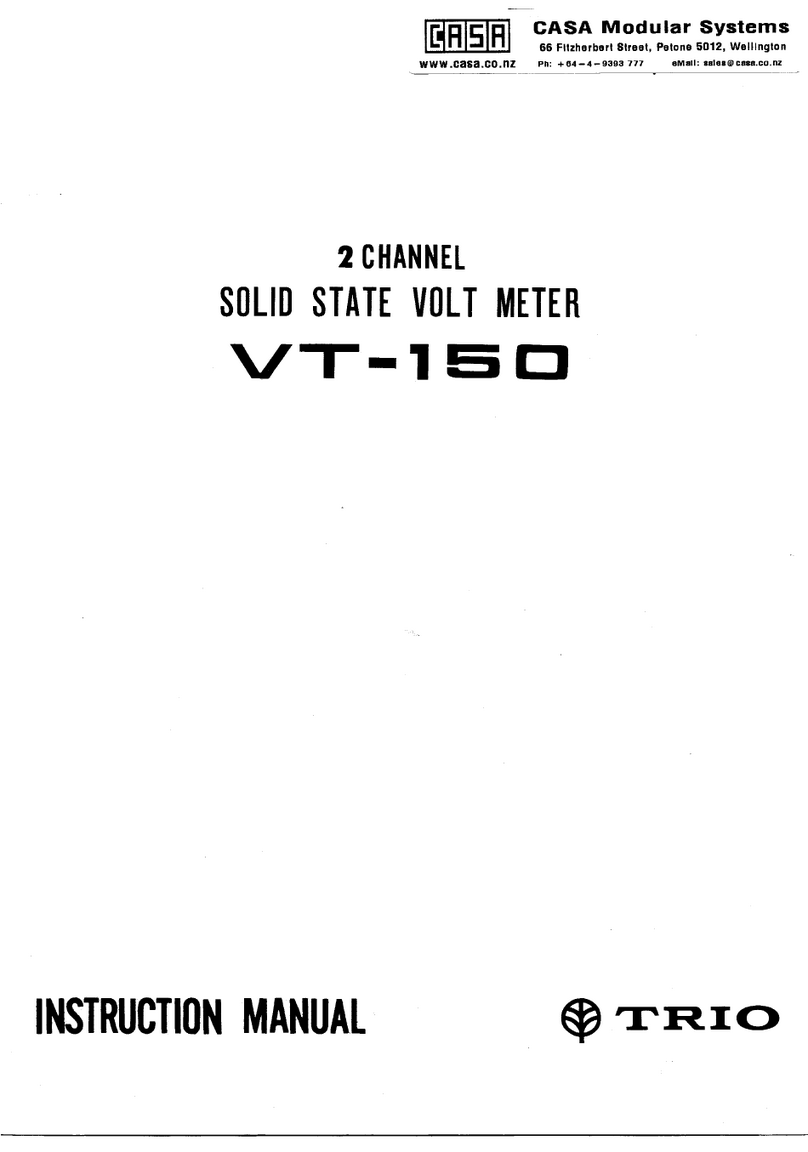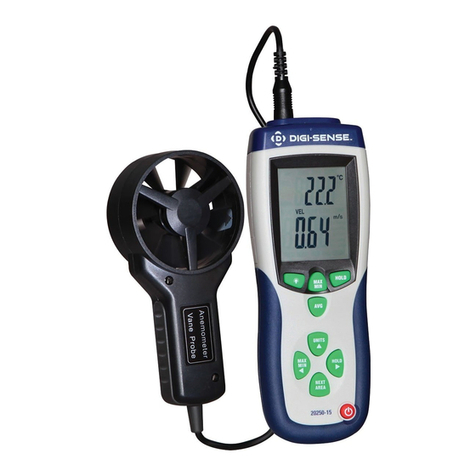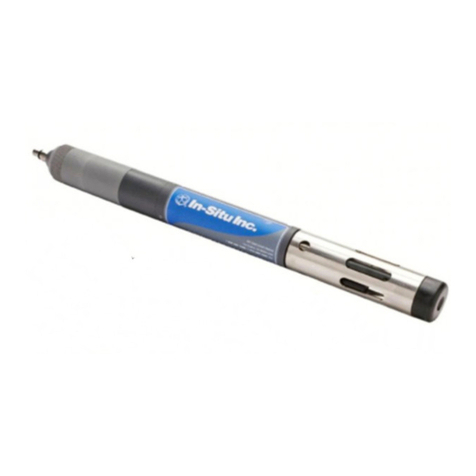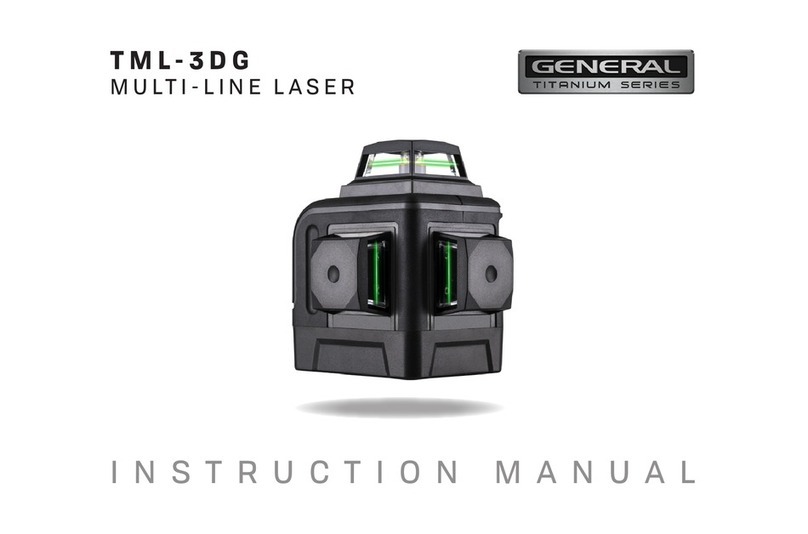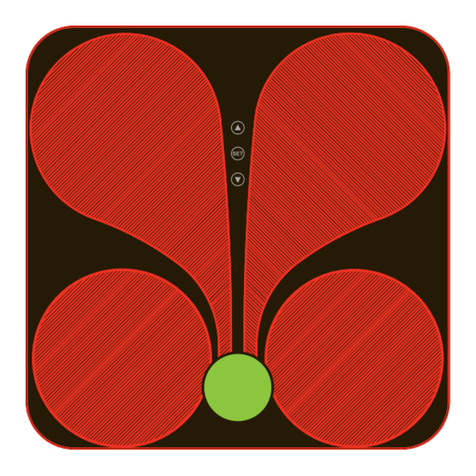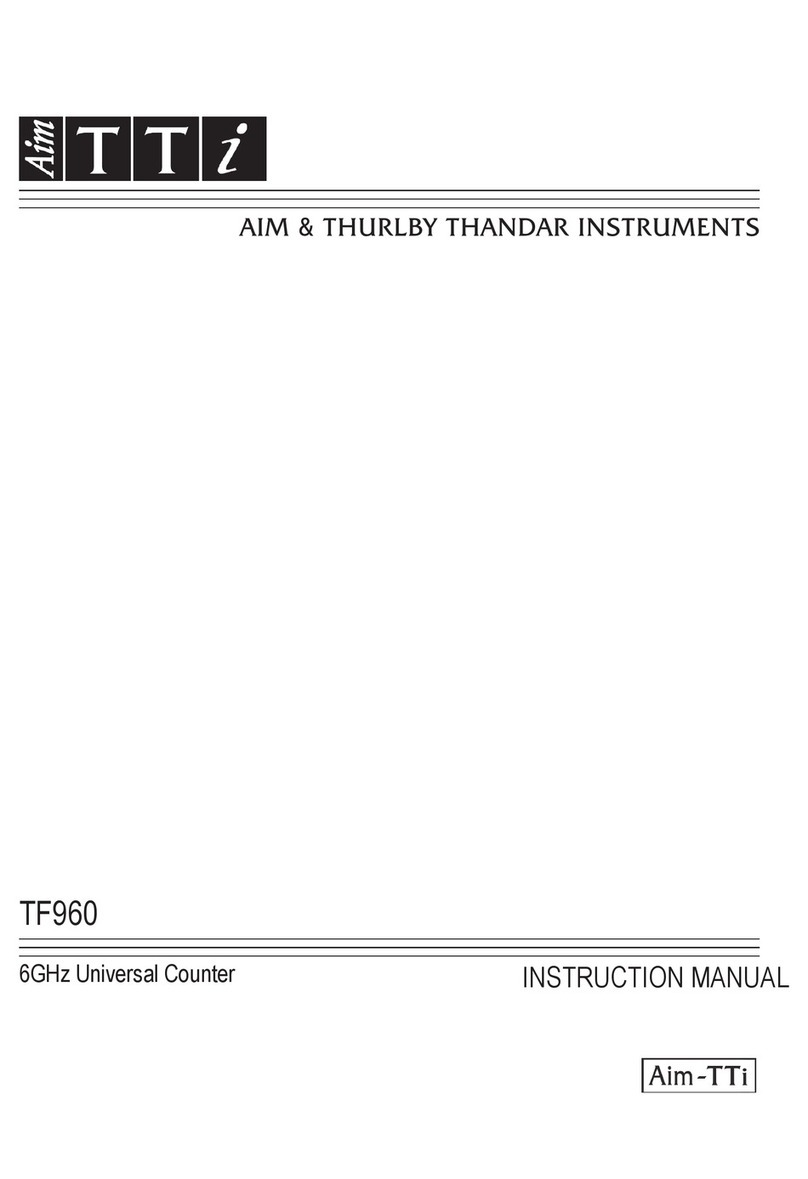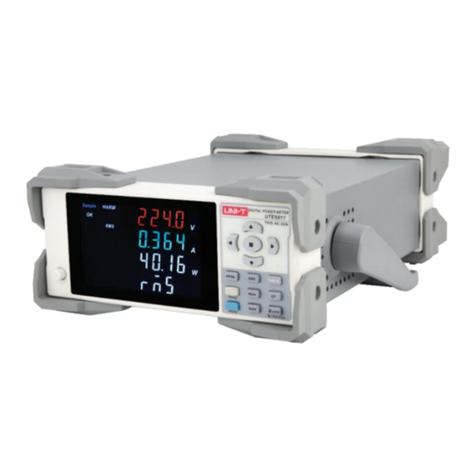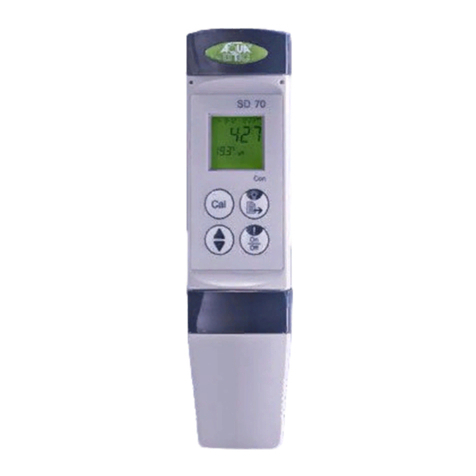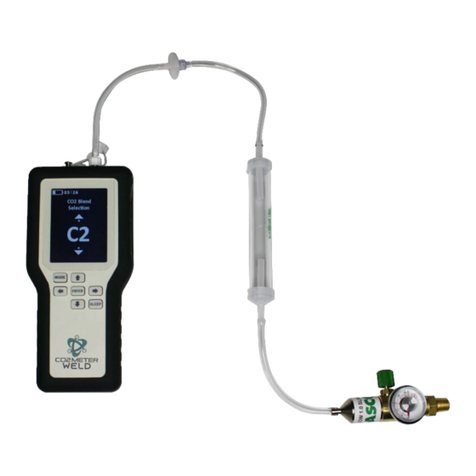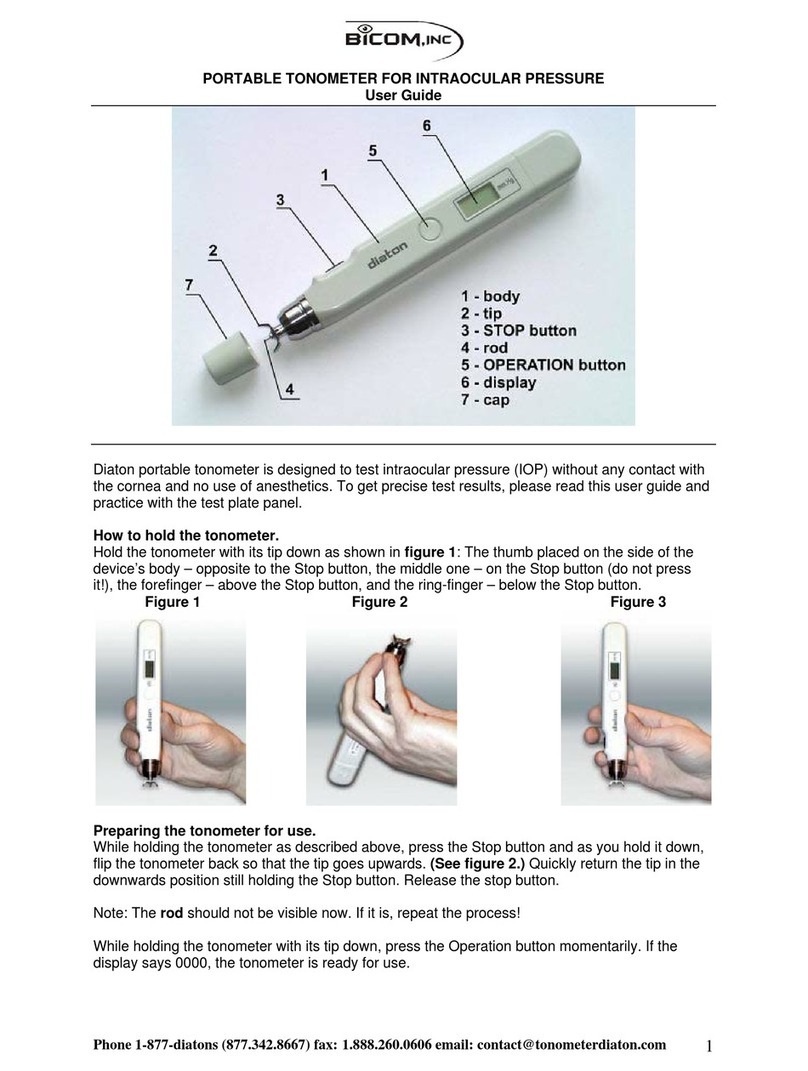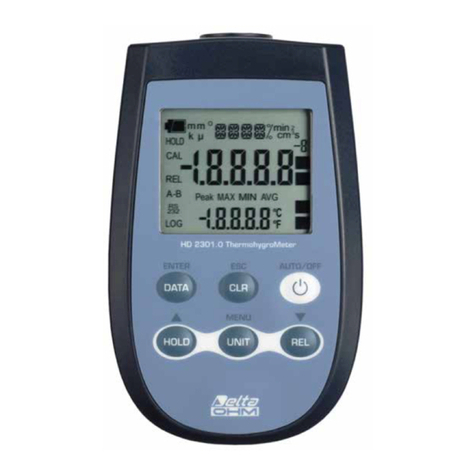Trio PF-810 User manual

.~TRIO
FUNCTIONPOWERMETER
PF-810
"
OPERATING INSTRUCTIONS
f..
~.
..
-

CONTENTS
Introduction. . . . . . . . . . . . . . . . . . . . . . . . . . 3
Features.. . . . . . . . . . . . . . . . . . . . . . . . . . . . . 4
Specifications.. . . . . . . . . . . . . . . . . . . . . . . . . 4
Principlesofoperation.. . . . . . . . . . . . . . . . . . . 5
Operatingparts. . . . . . . . . . . . . . . . . . . . . . . . 7
Cautions. . . . . . . . . . . . . . . . . . . . . . . . . . . . 9
Operation. . . . . . . . . . . . . . . . . . . . . . . . . . . . 9
Schematicdiagram. . . . . . . . . . . . . . . . . . . . . . 12
Smithchart. . . . . . . . . . . . . . . . . . . . . . . . . . 13
Applications.. . . . . . . . . . . . . . . . . . . . . . . . . 14
--"---"" ,.~ ~
INTRODUCTION
The Function Power Meter ModelPF-810 isa passing
type power/SWR meter coveringa wide frequency range
of 1.8MHzto 200MHz. It is a laboratory quality, profes-
sional instrument for observing and measuringforward
power from transmitter to load (antenna) and reflection
power from load to transmitter.
It is also capable of measuring power actually con-
sumed in load (forward power minus reflection power)
for convenience of checking the conditions of trans-
mitter and load, in addition to measuringSWRat power
greater than 1W.
Besides being used to monitor the operating condi-
tions of transmitter or to adjust filters, matching circuit,
etc., it is also used to monitor production lines and
businessuse radio stations.
3)

FEATURES
*Troidal core type directional coupler assures flat fre-
quency response, eliminating the need for calibration
tables; calculations and handling knob of frequency
variation.
*Frequencies are practically flat over the range of 1.8
MHz to 200MHz in full scale of meter even in 1.9MHz
or 3.5MHz band, thus permitting measurements of
various functions in low bands with small power.
*Radiant power (RAD) indicator (Pat. pending) to in-
dicate forward power minus refrection power, is
included in the instrument. This is particularly useful
to prevent trouble which might occur during matching
work, and facilitates monitoring and adjustments of
transm itter.
* Aritenna selector switch is self-contained to select
either of two antennas for quick QSY. If a dummy
load is connected instead of antenna, the instrument
functions as a terminal type power meter.
*Large sized, linear scalefor easy and error-free read
ing of SWR and power.
4
Measurement items:
SPECIFICATIONS
Frequency range:
Power measurement
range:
Range setting:
SWR measurement
range:
Minimum power for
SWR measurement:
Power measurement
accuracy:
Residual SWR:
Frequency response:
Insertion Loss:
Type of connector:
Input/output
impedance:
Output terminal:
Forward power, refrection
power, radiant power and SWR
1.8MHzto 200MHz
1Wto 150W
5W, 25W and 150W(3 ranges) -+
1.0 to 10 I
J..
1
1W
Within :t10% of full scale
Less than 1.2
Within :t 0.25dB
Less than 0.5dB
"UHF" type
50-ohm
Two (selected by pushbutton
switch)
j,,,
I
I
I
J
-\

PRINCIPLES of OPERATION
The Model PF-810 is composed of four major units,
a directional coupler, a voltage converter, an indicator
and a switching unit; all units except the antenna selector
and the directional coupler, function as a DC circuit.
Directional coupler
The directional coupler is used to pick up a very small
power from the coaxial cable connected between trans-
mitter and load by separating forward wave and refrec-
tion wave components.
The directional coupler used in PF-810 consists of
a wide band current transformer T1 and a voltage trans-
former T2, both employing troidal cores as shown in
Fig. 1.
iI
TX ANT
Rfwd
~
1 In Fig. 1, suppose that a current "il" flows from TX
to ANT, then a reverse current "i2" flows into the
secondary of the current transformer T2. At this time, a
current "i3" is flowing into the primary of the voltage
transformer and, hence, a current "i4" (=i2/2) developed
from "i2" and a current "i5" developed from "i3" to-
gether flow into the secondary of the transformer.
If these two currents (i4 and i5) are equal, no voltage
appears across "Rref" because the currents flowing into
"Rref" in reverse direction each other are cancelled,
however, a voltage appears across "Rfwd" because the
currents flowing into "Rfwd" have the same directivity.
If power is refrected by ANT, the current "i5" con-
tinues to flow in the same direction, while the current
"i4" flows in reverse direction, thus a voltage appears
across "Rref", too. Such an action is independent of
frequencies if T1 and T2 each ahve a wide frequency
band.
The directional coupler of PF-810 uses wide band
transformers constructed with troidal core and newly
developed windings, to pick up the diode detected
voltage, proportional to forward power and refrection
power, from the resistors of "Rfwd" and "Rref".
Voltage converter
The voltage converter is used to provide linear read-
ings of power on the scale. Without this converter, the
DC voltage from the directional coupler, which is pro-
portional to forward power or refrection power, is
proportioned to the square root of power, thus the
5
T1
i2
"-- i3
"")
-.
i4 '$ Rref
i5
Fig. 1

readings on the scale are crowded which causes dif-
ficulty in reading or loss of reading accuracy.
The voltage converter uses specially selected diodes,
resistors and capacitors. The same type of converter is
connected to both the forward power and refrection
power terminals.
Indication and selection
The voltage signal from the voltage converter, which
is proportional to power, is indicated on the 100,uA DC
ammeter through the function selector switch. The
power range is selected by the range selector resistors.
Two sets of voltage converter and selector of the same
design are provided for forward power and refrection
power. These can be used simultaneously. Being so
designed, PF-810 is able to indicate radiant power(RAD).
This is achieved by the differential operation of the
voltage converters to which forward and refrection wave
voltages applied respectively.
In PF-810, two identical circuits are connected back
to back to further improve the performance of the
directional coupler.
6
TX ANT
...
I
I
4
IJ;
V.REF
V.FWD
Fig. 2
TX
.4
ANT1
() () ANT2
.;;'
fig. ~ olock Diagram

OPERATING PARTS
Meter
Power range
selector
switch
SWR
calibrator
.T'UO FUNCTION POWER METER PF-8I0
~
RANGE (W) FUNeT","
REF RAO
, ,
"15'
_SWR
OFF.
CAL<BRATIDN
,0,
,-,
MON MU
ANT SELECTOR
~:::::8~
@
Fig. 4 Front Panel
Function
switch
Antenna
selector
switch
Front panel (Fig. 4)
Function switch (FUNCTION)
The function switch is used to select the desired
function to be measured. This rotary switch has 6 posi-
tions, OFF-FWD-REF-RAD-CAL~SWR.
At the OFF, position, the meter circuit is discon-
nected and the meter becomes inoperative, but the
power is still on and the antenna selector switch
remains operative.
At the FWD (forward) position, forward power from
transmitter to load is measured on the meter.
At the REF (refrection) position, refrection power
from load to transmitter is measured on the meter.
At the RAD (radiant) position, radiant power, that is,
forward power minus refrection power (RAD=FWD-
REF), is measured on the meter. In the absence of re-
frection, the reading of FWD is practically equal to that
of RAD.
In measuring SWR, the functoin switch should be set
to CAL position and then to SWR position. First set the
switch to the CAL position and turn the calibration knob
so that the pointer indicates the CAL position on the
meter, then set the switch to the SWR position and the
value of SWR can be measured on the meter. A right
turn of the calibration knob will swing the pointer to
the right, and vice versa. Adjust the knob for accurate
calibration. Do not turn this knob after the function
switch is set to the SWR position.
7

* Power range selector (RANGE)
The power range selector is used to select the proper
power range, 5W, 25W or 150W, according to the output
of transmitter. For easy reading, set the meter pointer in
approximate center position of the scale. Since refrec-
tion power is small, set the selector to a smaller range
with the function switch in the REF position.
* Antenna selector (ANT SELECTOR)
This 2-position pushbutton switch is used to connect
the transmitter to ANT1 or ANT2. Press the button until
it locks and the transmitter is connected to ANT1. By
releasing the button, the transmitter is connected to
ANT2.
* Rear
TX: panel (Fig. 5)
For connection of coaxial cable from trans-
mitter .
ANT1: For connection of antenna or other load
such as dummy load.
ANT2: Same as ANT1.
ANT1
ANT2
8
ANTI ANT2
Fig. 5 Rear panel
I
J
TX
I
J

CAUTIONS
1. Connect cables firmly to the TX and ANT con.
nectors confirmingthe direction of connection.
2. PF-810 has 50-ohm of impedanceand should be con-
nected with 50.ohm cables. If it isto be connected to
a device of different impedance (75-ohm, etc.), be
sure to use a matching transformer or an antenna
coupler.
3. Keep your hand off the internal circuit.
4. If SWR of load being used is unknown, the high
frequency voltage of PF-810 may be increased ex-
cessively depending on the length of cable or the
condition of load. In this case, adjust the power as
small as possible for accurate impedance matching.
Whenthe impedance matching iscompleted, then set
the transceiverfor fu11power.
5. Do not touch the antenna selector pushbutton while
the transmitter is in operation. Besure to turn off the
power wheneverthe antenna selector isused.
OPERATION
Connect a 50-ohm coaxial cable between the antenna
terminal of the transceiver and the TX connector at the
rear of PF-810, as shown in Fig. 6. Similarly, connect
another 50.ohm coaxial cable between your antenna and
the ANT1 or ANT2 connector. Two different antennas
can be connected to PF-810. In either case, the antenna
to be used should be selected by the antenna selector
pushbutton.
Transmitter or transceiver
ANT2
ANT 1
~IIANTI
00IIANT2
TXII@ 0
PF-810
Fig. 6
1. Measurement of SWR
After the instrument has been connected as shown in
Fig. 6 and the antenna has been selected, set the
function switch to the CAL position and the calibra-
tion knob to the MIN positi on to start the trans-
mitter in operation. If possible, adjust the power of 9

the transmitter to about 10W.
Turn the calibration knob clockwise until the meter
pointer indicates the CAL position. Then, set the
function switch to the SWR position and SWR will be
indicated on the meter. Note that if the power of the
transmitter is less than 1W, the meter cannot be set
to the CAL position.
Also, when SWR is close to "1" during matching
work, the meter pointer will deflect little, making it
impossible to find the dip point of SWR. In this case,
turn the calibration knob further clockwise until the
meter pointer properly deflects so that the dip point
can be obtained for easy matching of impedance. The
reading of SWR obtained in this manner is incorrect
because the calibration knob has been turned beyond
its set point, so the meter should be calibrated again
according to the ab()vementioned procedure after the
completion of impedance matching.
The value of SWR measured on the meter varies
slightly with the volume of power, since the detector
diodes in the circuit have non-linear characteristics.
Normally, SWR should be calibrated at 10W of
forward power. If the power is larger than 10W, the
value of SWR on the meter will be a little higher than
the actual value, and vice versa. Accurate SWR can be
measured at 10W of forward power or by calculation
after measuring forward power and refrection power
as described below.
2. Measurement of forward power (FWD)
Connect the instrument as shown in Fig. 6. Set the
10
power range selector to the 150W position to prevent
the meter pointer from scaling out. Set the function
switch to the FWD position. With the transmitter
operated, adjust the power range selector to the
proper range and read forward power on the scale.
If a dummy load is connected to the ANn or ANT2,
instead of connecting an antenna, the instrument
functions as a terminal type power meter, allowing
you to check the operating condition of the antenna
being used by manipulating the antenna selector
pushbutton. It is also useful for tuning the trans-
mitter.
3. Measurement of refrection power (REF)
Set the instrument as described above except that the
function switch should be positioned to REF. Refrec-
tion power will be read on the meter scale.
4. Calculation of SWR from forward power (Pf) and
refrection power (Pr)
After the forward power (Pf) and refrection power
(Pr) have been measured according to the procedures
outlined in items 2 and 3 above, accurate SWR can be
obtained from the following equation:
1+ rP;
N~
1- {P;
Np'f
SWR=
'.
Actual SWR can also be obtained from the ratio of Pf
to Pr on a praph (Fig. 7).

5. Measurement of radiant power (RAD)
In matching the impedance or monitoring the operat-
ing conditions of transmitter, both the forward power
(Pf) and the refrection power (Pr! should be observed.
If the refrection power (Pr) is extremely large (SWR
of load is unusually high) while observing "Pt" alone,
a large "Pf" is measured on the meter even when
little power is consumed in the load. On the other
hand, if only the "Pr" is observed, the meter in-
dicates a smaller refrection power (Pr) when the
output of transmitter is decreased due to some con-
dition of the load .t>eingused, creating an illusion that
the refrection power was very small. However, this
can be eliminated by setting the function switch to
..' 2.5
a:
;< 2
(f)
0.05 0.15 0.2
Pr/PI
0.25 0.3
O. I
Fig. 7
the RAD position with PF-810 connected near to the
load. In this way, the power (Pf-Pr) consumed in the
load is indicated on the meter, which not only offers
a convenience to impedance matching work but also
allows you to monitor both the forward power and
refrection power at the same time because the power
measured is decreased as the refrection increases. Ac-
cordingly, when PF-810 is used as a monitor, the
function switch is normally set to the RAD position.
Even when PF-810 is connected near to the trans-
mitter, the power measured on the meter can be
regarded as a radiant power as long as the return loss
of the transmitting system is disregarded. When the
meter indicates a maximum radiant power (RAD), it
means that the transmitter or the antenna coupler is
properly adjusted.
6. Antenna selector
The antenna selector permits selection of antennas or
dummy load. Two different antennas, such as 3.5/7-
MHz 2-band dipole antenna and 14/21/28MHz 3-band
Vagi antenna or HF band and 144MHz band antennas,
can be connected to ANT1 and ANT2, respectively.
A dummy load can also be connected to either ANT1
or ANT2, instead of connecting an antenna, for
tuning or testing the transmitter.
By pressing the antenna selector pushbutton, ANT1
is connected to the instrument. By pressing the
button once again, it is releaspd and ANT2 is con-
nected. Note that the power of the transmitter should
be turned off whenever the button is to be pressed. 11

SCHEMATIC DIAGRAM
TX Directional coupler ANT I
,------
I
I01
I
I
I
I
I
L.
3
F
z
0
;::
..
a:
ID
::;
..
0ID
'"
51
C>
a:
>
SlO2d All resistors are 1/4W :t5%, unless
otherwise noted. The circuit is sub-
ject to change without notice for
improvement.
CIO O.I~F
12
SIOI S102a-d S103a-d
coANT SELECTOR FUNCTION RANGE
C>
-ANT I OFF 05W
0 ANT 2 0 FWD 025W
0 REF 150W
0 RAD
0 CAL
0 SWR

SMITH CHART
t.
I.
I
11
II
I
1I
:1
11
Ii
~
I. 13

APPLICATIONS
14
DX and local transmission
or quick aSY to other bands
with two antennas
000
000
Transmitter or transceiver
Tune-up of antenna and TX
Transmitter or transceiver
~
~~
NT1
00ANT 2
TX @ 0
PF-810
PF-810
Tune-up of TX or antenna coupler
Transmitter or transceiver
ANT1 ANT2
~
50-ohm dummy load
c,
~
00
Txll 0 011ANT2
PF-8tO ~

Tune-up of TX and antenna coupler
Transmitter or transceiver
~
I
i-
!
~Antenna coupler
~ANTI _fo
TXI ~ °0 ANT2 <:>
PF-810
Observation and adjustment of sending waveforms with monitor-scope
Transmitter or transceiver
r
I
r
*'
15

Table of contents
Other Trio Measuring Instrument manuals
Popular Measuring Instrument manuals by other brands
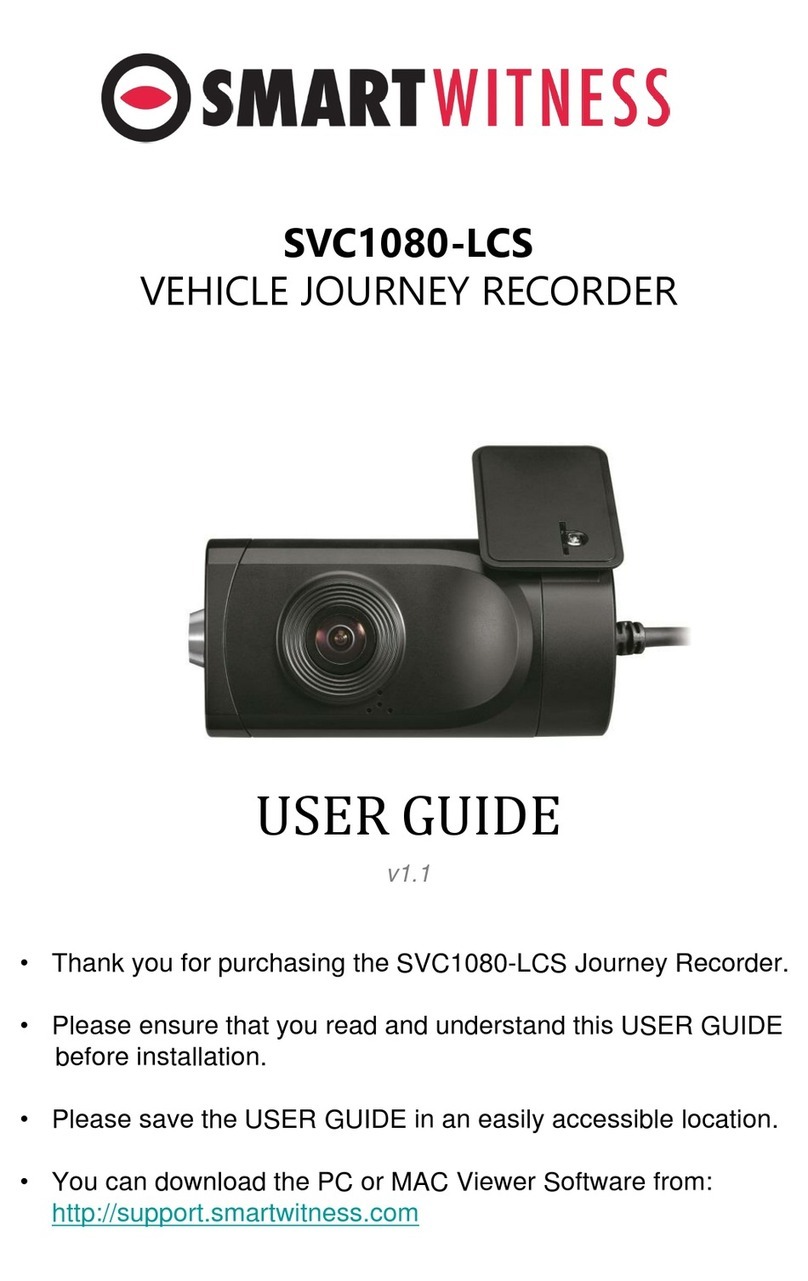
Smart Witness
Smart Witness SVC1080-LCS user guide
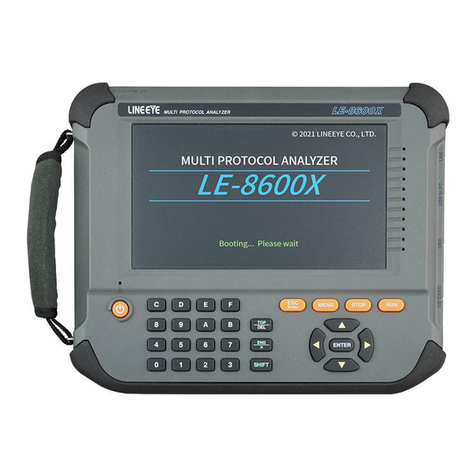
LineEye
LineEye LE-8600XR instruction manual
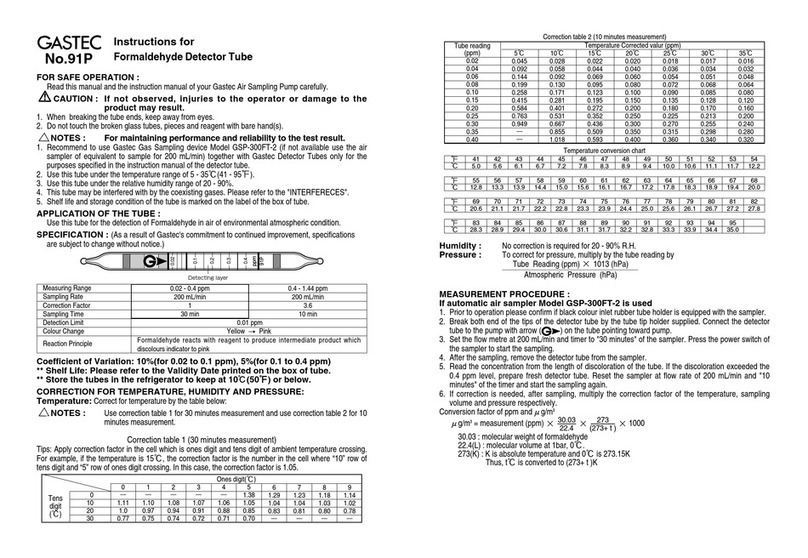
Gas-Tec
Gas-Tec 91P instructions
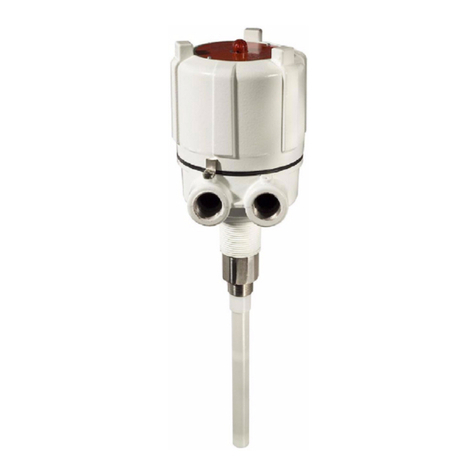
Bin Master
Bin Master PROCAP I Series operating instructions
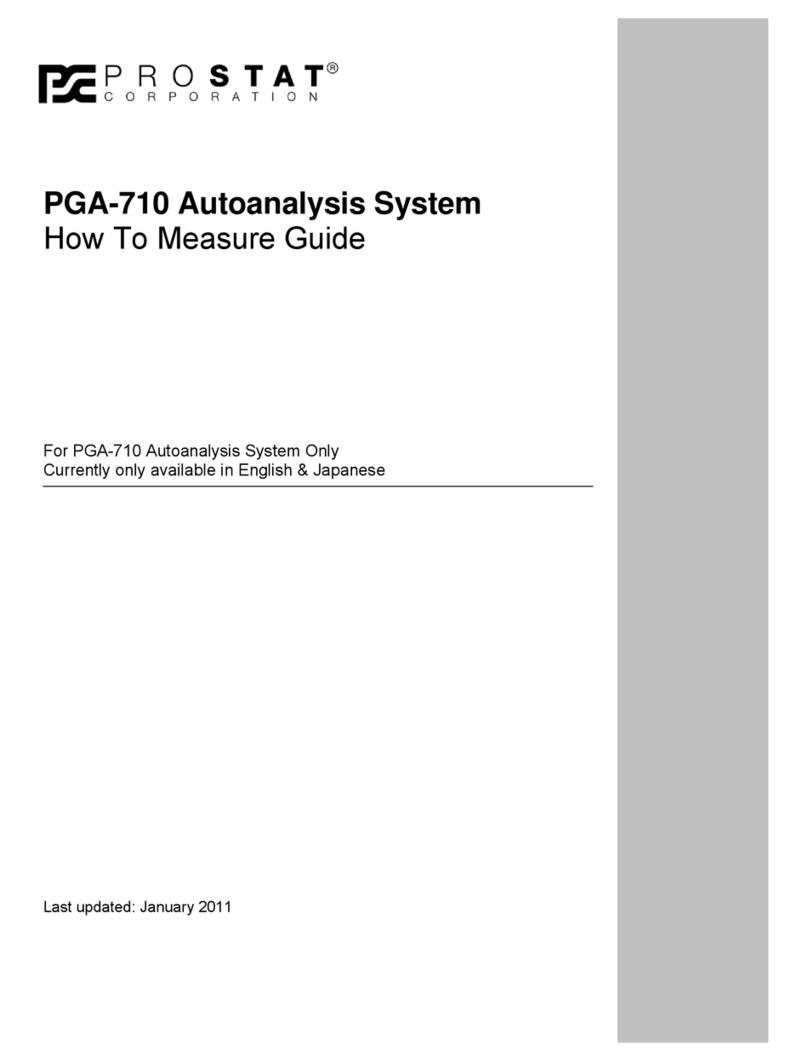
Prostat
Prostat PGA-710 How To Measure Guide
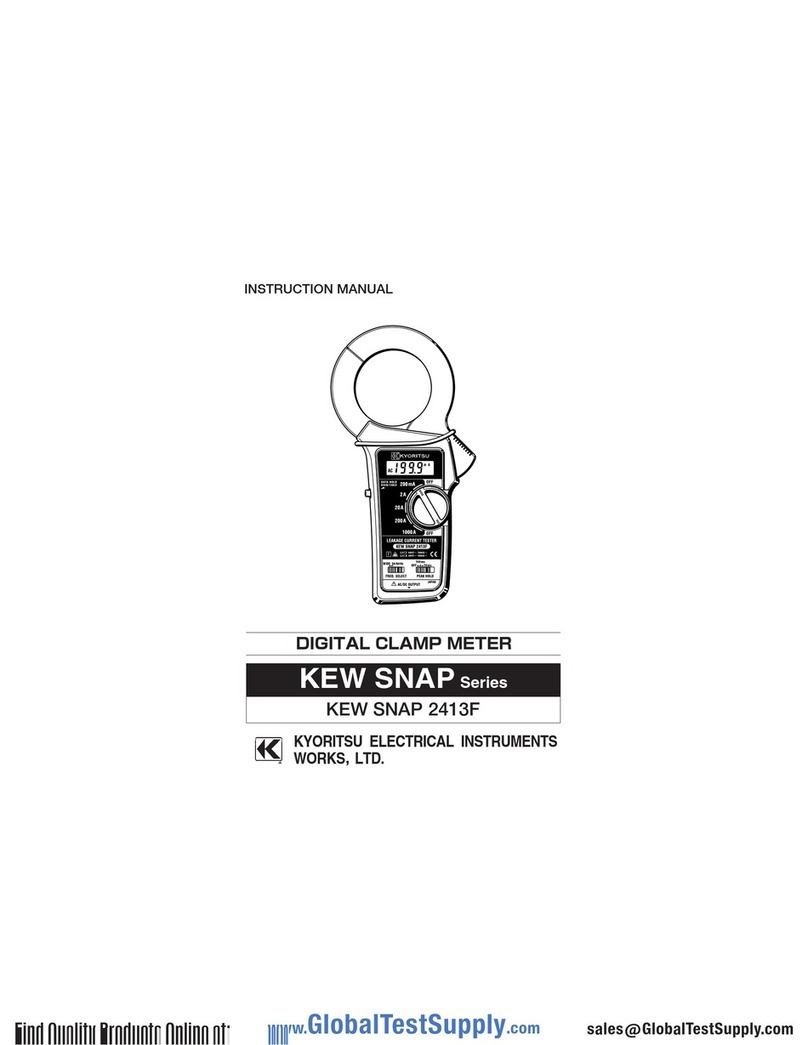
Kyoritsu Electrical Instruments Works, Ltd.
Kyoritsu Electrical Instruments Works, Ltd. KEW SNAP Series instruction manual
